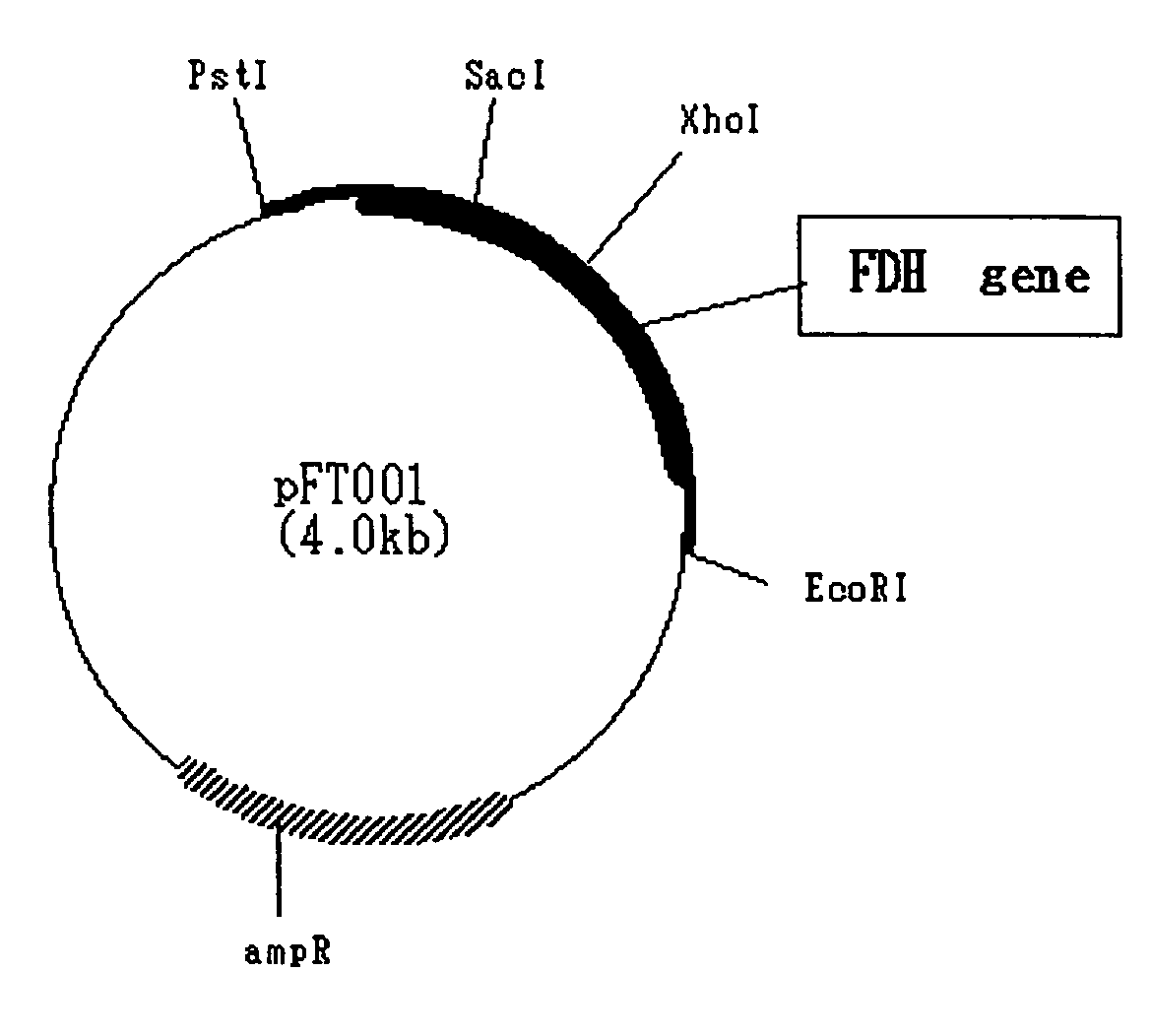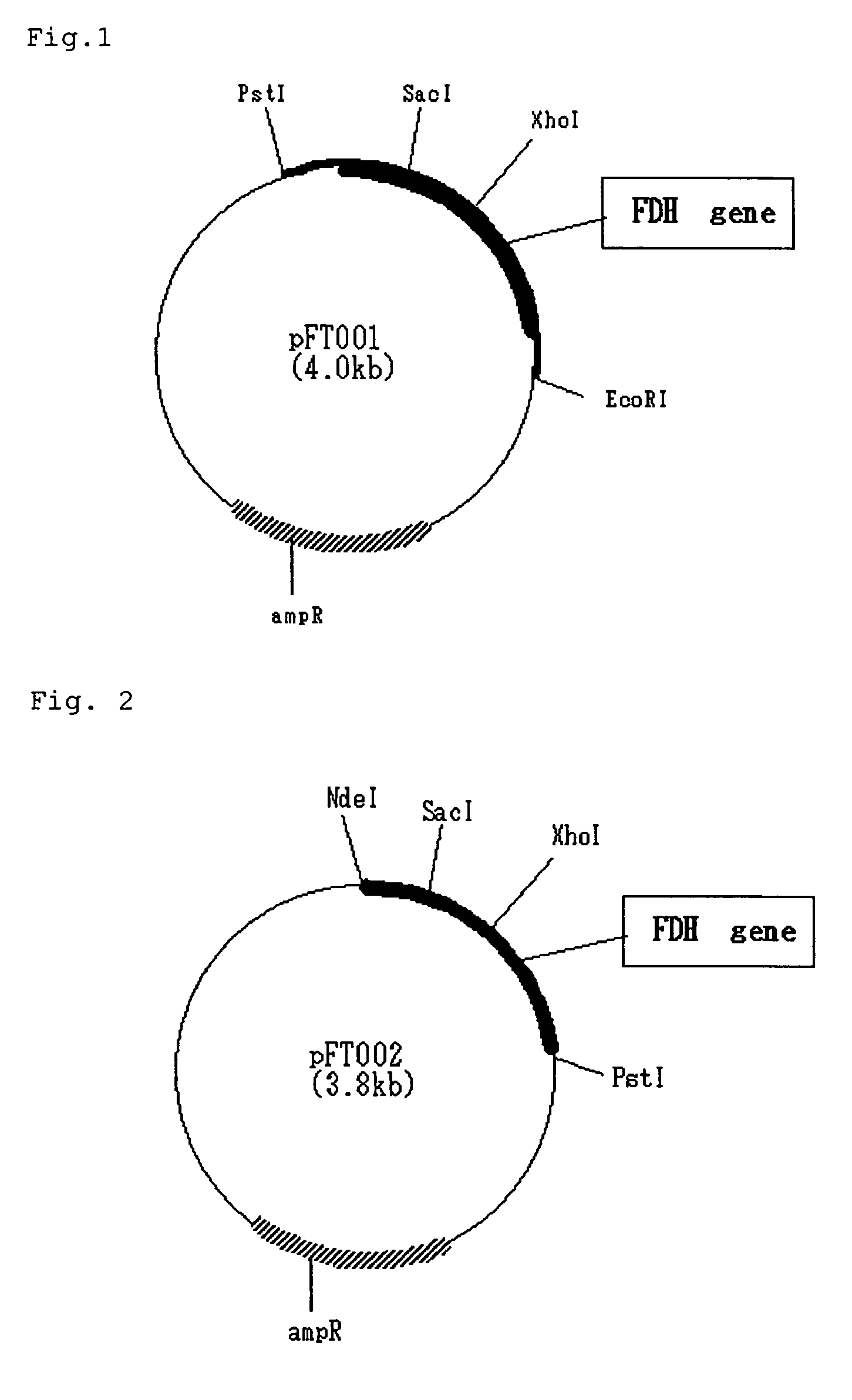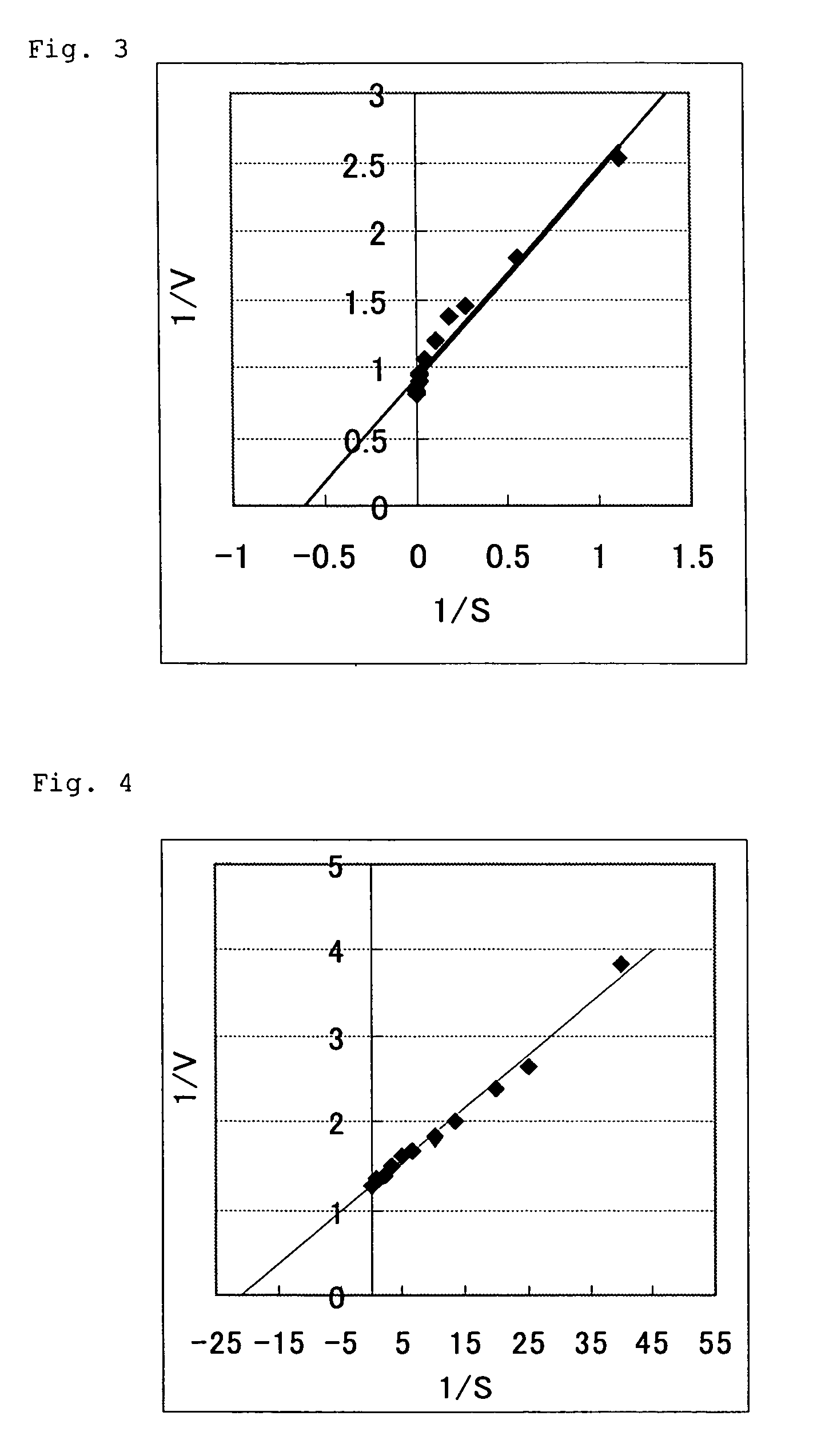Formate dehydrogenase tolerant to halogen compounds and process for producing the same
a technology of halogen compounds and formate, which is applied in the field of polypeptides tolerant to haloketone compounds and having formate dehydrogenase, can solve the problems of unstable coenzyme regeneration, low enzyme productivity, and low specific activity, and achieves low enzyme productivity and high specific activity. , the effect of large km valu
- Summary
- Abstract
- Description
- Claims
- Application Information
AI Technical Summary
Benefits of technology
Problems solved by technology
Method used
Image
Examples
example 1
Acquisition of the Thiobacillus sp. KNK65MR Strain
[0105]The formate dehydrogenase high-producer strain of the invention, namely Thiobacillus sp. KNK65MA, was isolated as follows. Soil samples collected from various geographic locations were respectively suspended in 0.9% saline. Each of the supernatants obtained in size of 1% was inoculated into 7 ml of the liquid medium of the composition shown in Table 1, which contained methanol as a sole carbon source, followed by shake culture at 30° C. under aerobic conditions.
[0106]
TABLE 1Methanol8g(NH4)2SO45gKH2PO40.15gK2HPO44.85gMgSO40.5gNaCl0.1gCaCl20.1gMeat extract0.1gYeast extract0.1gPolypeptone0.1gBiotin20μgCalcium pantothenate2mgFolic acid2μgInositol10mgNiacin400μgp-aminobenzoic acid200μgPyridoxine hydrochloride400μgRiboflavin200μgThiamin hydrochloride400μgBoric acid500μgCuSO440μgKI100μgFeCl3200μgMnSO4400μgNa2MoO4200μgZnSO4400μg
[0107]The above composition was made up to 1 L with water, adjusted to pH 9, sterilized by autoclaving, and u...
example 2
Isolation and Purification of the Formate Dehydrogenase
[0113]A colony of Thiobacillus sp. KNK65MA was inoculated into 7 ml of a medium of the composition shown in Table 2 and shake-cultured aerobically at 28° C. for 2 days. The resulting culture medium each in size of 1% based on the medium volume was inoculated into 100 ml per flask of a production medium of the composition shown in Table 3 and shake-cultured aerobically at 28° C. for 7 days.
[0114]
TABLE 2Methanol20 gGlycerol10 gTryptone10 gYeast extract 5 gNaCl 5 g
[0115]The composition was made up to 1 L with water, adjusted to pH 7, sterilized by autoclaving, and used. However, methanol was added after sterilization.
[0116]
TABLE 3Methanol20g(NH4)2SO45gKH2PO40.15gK2HPO44.85gMgSO40.5gNaCl0.1gCaCl20.1gMeat extract0.1gYeast extract0.1gPolypeptone0.1gBiotin20μgCalcium pantothenate2mgFolic acid2μgInositol10mgNiacin400μgp-Aminobenzoic acid200μgPyridoxine hydrochloride400μgRiboflavine200μgThiamin hydrochloride400μgBoric acid500μgCuSO440μgK...
example 3
Properties of the Enzyme
[0119]The properties of the purified formate dehydrogenase obtained in Example 2 were studied as follows.
[0120]The activity of the formate dehydrogenase obtained was assayed by quantitating the increase in absorbance at 340 nm resulting from formation of NADH in 0.1 M phosphate buffer (pH 7) containing 500 mM sodium formate and 5 mM NAD at 30° C. or 40° C. In this connection, the amount of the enzyme yielding 1 mmol of NADH in 1 minute was defined as 1 unit. Protein assay was performed by the method of Lowry using BSA as standard protein. The specific activity of the purified formate dehydrogenase was 7.6 u / mg protein (30° C.) or 13.3 μ / mg protein (40° C.)
[Determination of Km Values]
[0121]The Km values for formate and NAD were determined as follows. Thus, the Km value for formate was determined by measuring the activity with the concentration of sodium formate varied under the above specific activity assay conditions (30° C., NAD 5 mM) and ...
PUM
| Property | Measurement | Unit |
|---|---|---|
| temperature | aaaaa | aaaaa |
| temperature | aaaaa | aaaaa |
| temperature | aaaaa | aaaaa |
Abstract
Description
Claims
Application Information
 Login to View More
Login to View More - R&D
- Intellectual Property
- Life Sciences
- Materials
- Tech Scout
- Unparalleled Data Quality
- Higher Quality Content
- 60% Fewer Hallucinations
Browse by: Latest US Patents, China's latest patents, Technical Efficacy Thesaurus, Application Domain, Technology Topic, Popular Technical Reports.
© 2025 PatSnap. All rights reserved.Legal|Privacy policy|Modern Slavery Act Transparency Statement|Sitemap|About US| Contact US: help@patsnap.com



